#quantum philosophy
Text
"Without consciousness nothing exists - actually nothing at all in this world. Everything, truly everything that makes up our world, everything imaginable has always and exclusively run through a human consciousness up to this point in time.
If there is no consciousness, it cannot be proven that the world and the entire universe exist. If there is no consciousness anywhere, there are no "I"s, no environment, no nature, no sun, no cosmos.
It follows in reverse that consciousness creates everything - everything that exists; everything we feel through our senses; everything we experience; everything we remember."
-Ulrich Warnke
#loa#non dualism#non duality#manifestation#loassumption#neo's posts💋#self concept#law of assumption#loablr#law of consciousness#quantum philosophy
556 notes
·
View notes
Text
"Multiplicity is only apparent, in truth, there is only one mind."

Erwin Schrödinger was an Austrian physicist
Born 12 August 1887
Died 4 January 1961
#Erwin Schrödinger#Austrian physicist#Quantum mechanics#Schrödinger equation#Wave function#Quantum theory#Cat paradox#Nobel Prize in Physics#Quantum superposition#Wave-particle duality#Schrödinger's cat#Quantum entanglement#Quantum probability#Quantum states#Quantum mechanics interpretation#Particle physics#Quantum wavefunction#Copenhagen interpretation#Quantum philosophy#Quantum mechanics history#Quantum theory applications#Quantum theory development#Quantum theory principles#Schrödinger group#Quantum mechanics equations#Quantum mechanics principles#Quantum mechanics concepts#Quantum mechanics wave equation#Quantum mechanics wavefunction#Quantum mechanics discoveries
7 notes
·
View notes
Text
"The Space Between Thought and Action"
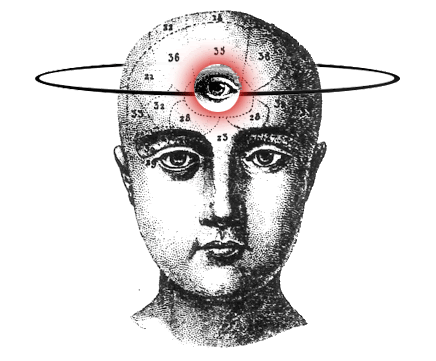
"The definition of free will is the power of acting without the constraint of necessity or fate; the ability to act at one's own discretion."
I detest the notion of destiny; it strikes me as insipid. I've never watched a movie and been pleased to hear spoilers. Let me ask you — do you believe that everything we do is predetermined? That there is no space between conceivable thought and reaction? Well, in all fairness, to each their own. But I refuse to accept such a mundane view of reality.
Many cultures and peoples cling to the idea of destiny, as it makes them feel special or unique. As if they are God's chosen one or the universal pick of some sort. But which one has more Kirk factor? To be chosen to do something and you become that person no matter what you do? Or for you to be considered as a choice then through your actions you secure your spot as chosen? Through conscious effort through YOUR decision making?
The concept of free will is a subject of much debate. Many quantum scholars parade the notion that life is meaningless; we have no effect on the trajectory of anything truly. What a bleak and nihilistic way of thinking.
But to play devil's advocate, there are many things that may play a part in the decisions we make everyday. Our free will.
Benjamin Libet, a pioneering neuroscientist, was best known for his groundbreaking experiments on the neuroscience of free will. In the 1980s, Libet conducted a series of experiments that challenged conventional notions of conscious decision-making.
One of his most famous experiments involved asking participants to perform a simple action, such as pressing a button, while measuring the timing of their conscious intention to act and the onset of brain activity associated with the action. His findings suggested that brain activity related to the action began before participants reported being aware of their intention to act, leading to the controversial conclusion that our decisions may be initiated unconsciously.
Libet's work sparked widespread debate and continues to influence discussions about the nature of free will, consciousness, and the relationship between the brain and behavior. While his experiments remain controversial and have been subject to criticism and reinterpretation, they have had a profound impact on our understanding of human cognition and agency.
Additionally, let's dive into the neural correlates of decision-making. Picture this brain region as the CEO of your decision-making process, calling the shots and weighing the pros and cons of every option on the table. Yep, your DLPFC (that's dorsolateral prefrontal cortex for the uninitiated) is the mastermind behind your most strategic moves. But wait, there's more! Say hello to the anterior cingulate cortex, or ACC for short. This bad boy acts like the referee in the brain's boxing ring, stepping in when there's a conflict between competing choices or impulses. Think of it as your brain's way of saying, "Hold up, let's think this through before we make a decision we'll regret." And let's not forget about the basal ganglia, our brain's pleasure center. Nestled deep within the brain, the basal ganglia are like the party planners of decision-making, assessing the potential rewards and risks of each choice and guiding us toward the juiciest outcomes. And to tie it all together, recent neuroimaging studies have shed light on how these brain regions work in concert to shape our decisions in real-time.
The nature of causality and determinism.
Though we do have some jurisdiction over our behavior and actions that are just as many factors externally that can influence decision making such as environmental biological psychological factors.
But there is a great difference between cognitive facets nudging us into a direction and our future being predetermined and having no space between thought and action. We all can make sound decisions for ourselves. There is a space between thought and action.
- Black
0 notes
Text

**** (finally. Not what I was expecting and exactly what I was expecting. It feels like an important movie in the sense that our brains and collective consciousness have evolved enough to consider and grasp the concept of "quantum philosophy". And the complexity of connection, unity and "love". And the poster is very groovy. And I dig the Asian representation (took Hollywood long enough to show them as multi-faceted humans, jesus))
1 note
·
View note
Text
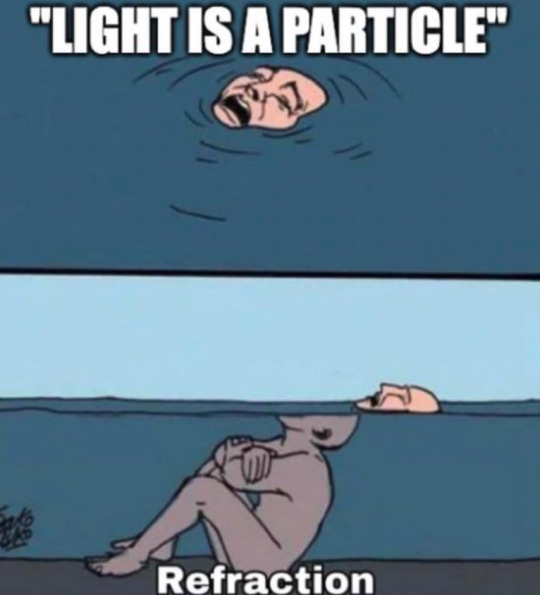
Ok, light is both, or neither. 😎
251 notes
·
View notes
Text

#science#women in stem#academia#stem#stemblr#space science#physics#astrophysics#astronomy#quantum mechanics#general relativity#cognitive science#psychology#neuroscience#cognitive neuroscience#philosophy of science#stem romanticism#stem memes#physics memes#science memes#neuroscience memes
193 notes
·
View notes
Text
Nothing worse than getting into a new subject and having no one to discuss it with
#self education#nerdy girls#philosophy#psychology#neurology#spirituality#religion#ethics#esoteric#literature#pop culture#video essay#art#art history#history#science#astronomy#quantum physics#politics#documentary#aa
138 notes
·
View notes
Photo

The Universe Is Not Locally Real, and the Physics Nobel Prize Winners Proved It
Elegant experiments with entangled light have laid bare a profound mystery at the heart of reality
One of the more unsettling discoveries in the past half century is that the universe is not locally real.
“Real,” meaning that objects have definite properties independent of observation—an apple can be red even when no one is looking;
“Local” means objects can only be influenced by their surroundings, and that any influence cannot travel faster than light.
Investigations at the frontiers of quantum physics have found that these things cannot both be true. Instead, the evidence shows objects are not influenced solely by their surroundings and they may also lack definite properties prior to measurement. As Albert Einstein famously bemoaned to a friend, “Do you really believe the moon is not there when you are not looking at it?”
This is, of course, deeply contrary to our everyday experiences. To paraphrase Douglas Adams, the demise of local realism has made a lot of people very angry and been widely regarded as a bad move.
Blame for this achievement has now been laid squarely on the shoulders of three physicists: John Clauser, Alain Aspect and Anton Zeilinger. They equally split the 2022 Nobel Prize in Physics “for experiments with entangled photons, establishing the violation of Bell inequalities and pioneering quantum information science.” (“Bell inequalities” refers to the pioneering work of the Northern Irish physicist John Stewart Bell, who laid the foundations for this year’s Physics Nobel in the early 1960s.)
Colleagues agreed that the trio had it coming, deserving this reckoning for overthrowing reality as we know it. “It is fantastic news. It was long overdue,” says Sandu Popescu, a quantum physicist at the University of Bristol. “Without any doubt, the prize is well-deserved...”
Read more: https://www.scientificamerican.com/article/the-universe-is-not-locally-real-and-the-physics-nobel-prize-winners-proved-it
#physics#science#quantum mechanics#quantum theory#entanglement#particle physics#photons#bell inequalities#the real#cosmology#the universe#philosophy#quantum entanglement
624 notes
·
View notes
Text
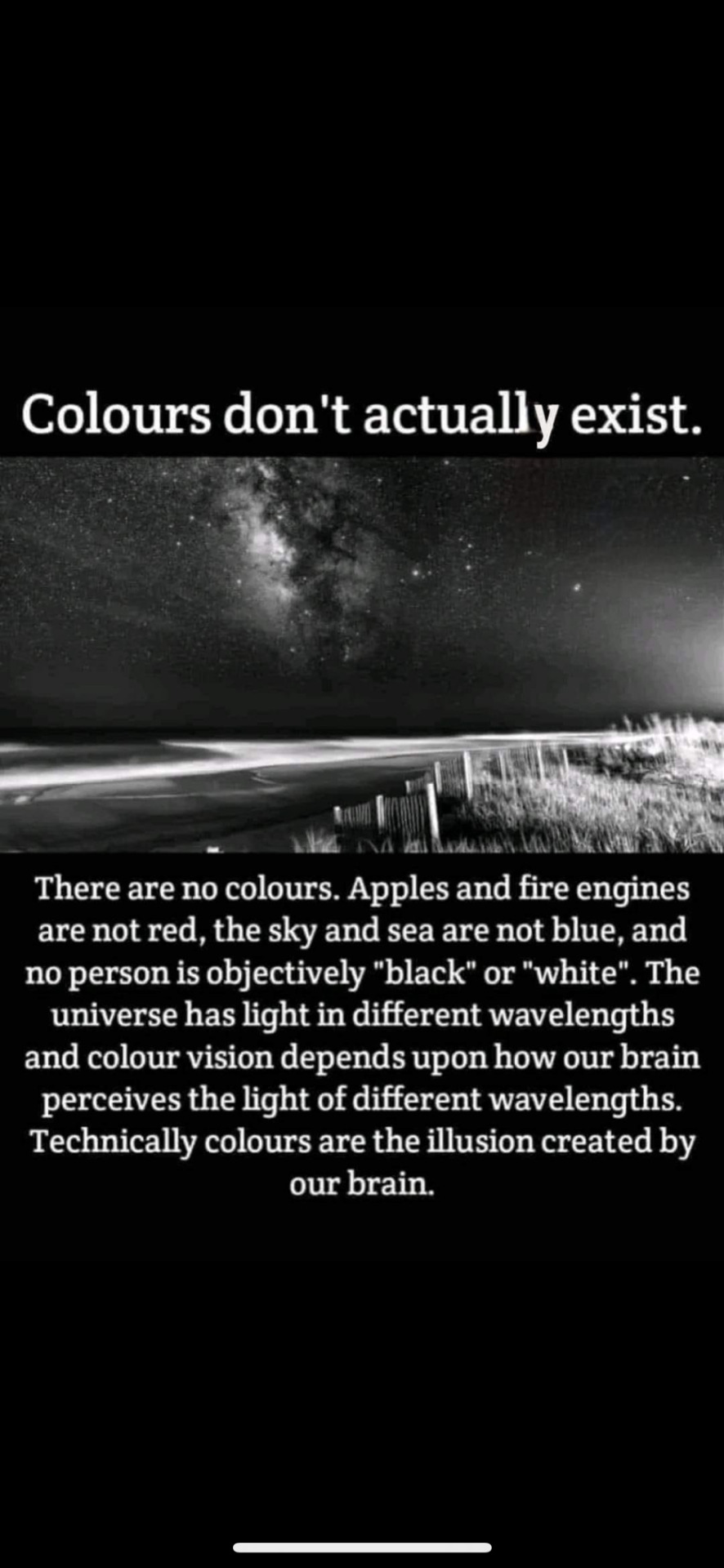
#physics#astronomy#science#quantummechanics#quantum mechanics#psychology#philosophy#quantumphysics#astronaut#paradox
66 notes
·
View notes
Text
111 notes
·
View notes
Text
Book Review: The Case Against Reality
Nima Arkani-Hamed shows up surprisingly rarely in popular science books. A major figure in my former field, Nima is extremely quotable (frequent examples include “spacetime is doomed” and “the universe is not a crappy metal”), but those quotes don’t seem to quite have reached the popular physics mainstream. He’s been interviewed in books by physicists, and has a major role in one popular physics…
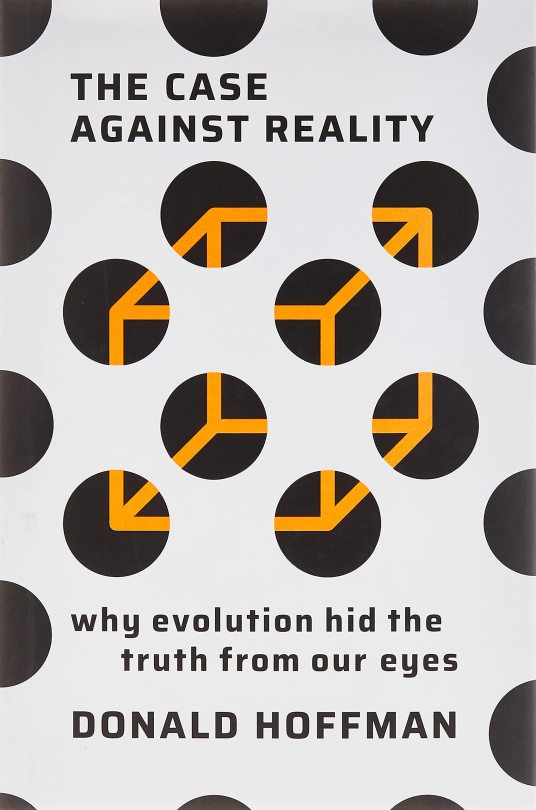
View On WordPress
#book review#particle physics#philosophy of science#psychology#quantum field theory#quantum mechanics#relativity#string theory
40 notes
·
View notes
Text

WELCOME TO THE RABBIT HOLE

- this blog is dedicated to all things spiritual, astrology, tarot, energy, consciousness and awareness -

masterlist:
astro observations:
1
2
astrology placements:
mercury & topics of conversation
mars & how to achieve your goals
mars & how you express anger
uranus & what makes you unique
uranus & social media
uranus & how you evoke change
neptune through the signs
neptune & daydreams
jupiter & luck through the signs
saturn & karma
midheaven & professional image
information:
dimensions for dummies
fear vs intuition
games:
astro game 1

#non dualism#spiritual#spiritual development#spiritualjourney#spirituality#spiritual awakening#god#consciousness#awareness#reality#shifting#manifesting#quantum mechanics#how to manifest#law of assumption#shifting realities#tarot readings#astrology#realism#philosophy#psychology#sociology
70 notes
·
View notes
Text
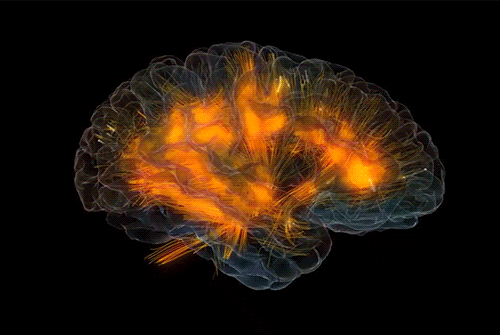
Is the Brain a Driver or a Steering Wheel?
This three part series summarizes what science knows, or thinks it knows, about consciousness. In Part 1 What Does Quantum Physics Imply About Consciousness? we looked at why several giants in quantum physics - Schrodinger, Heisenberg, Von Neumann and others - believed consciousness is fundamental to reality. In Part 2 Where Does Consciousness Come From? we learned the "dirty little secret" of neuroscience: it still hasn't got a clue how electrical activity in the brain results in consciousness.
In this concluding part of the series we will look at how a person can have a vivid conscious experience even when their brain is highly dysfunctional. These medically documented oddities challenge the materialist view that the brain produces consciousness.
Before proceeding, let's be clear what what is meant by "consciousness". For brevity, we'll keep things simple. One way of looking at consciousness is from the perspective of an outside observer (e.g., "conscious organisms use their senses to notice differences in their environment and act on their goals.") This outside-looking-in view is called behavioral consciousness (aka psychological consciousness). The other way of looking at it is the familiar first-person perspective of what it feels like to exist; this inside-looking-out view is called phenomenal consciousness (Barušs, 2023). This series is only discussing phenomenal consciousness.
Ready? Let’s go!

Source: Caltech Brain Imaging Center
A Hole in the Head
Epilepsy is a terrible disease in which electrical storms in the brain trigger seizures. For some people these seizures are so prolonged and frequent that drastic action is needed to save their lives. One such procedure is called a hemispherectomy, the removal or disconnection of half the brain. Above is an MRI image of a child who has undergone the procedure.
You might think that such radical surgery would profoundly alter the memory, personality, and cognitive abilities of the patient.
You would be wrong. One child who underwent the procedure at age 5 went on to attend college and graduate school, demonstrating above average intelligence and language abilities despite removal of the left hemisphere (the zone of the brain typically identified with language.) A study of 58 children from 1968 to 1996 found no significant long-term effects on memory, personality or humor, and minimal changes in cognitive function after hemispherectomy.
You might think that, at best, only a child could successfully undergo this procedure. Surely such surgery would kill an adult?
You would be wrong again. Consider the case of Ahad Israfil, an adult who suffered an accidental gunshot to the head and successfully underwent the procedure to remove his right cerebral hemisphere. Amazingly, after the five hour operation he tried to speak and went on to regain a large measure of functionality (although he did require use of a wheelchair afterwards.)
Another radical epilepsy procedure, a corpus collosotomy, leaves the hemispheres intact but severs the connections between them. For decades it was believed that these split-brain patients developed divided consciousness, but more recent research disputes this notion. Researchers found that, despite physically blocking all neuronal communication between the two hemispheres, the brain somehow still maintains a single unified consciousness. How it manages this feat remains a complete mystery. Recent research on how psychedelic drugs affect the brain hints that the brain might have methods other than biochemical agents for internal communication, although as yet we haven't an inkling as to what those might be.
So what's the smallest scrape of brain you need to live? Consider the case of a 44-year-old white collar worker, married with two children and with an IQ of 75. Two weeks after noticing some mild weakness in one leg the man went to see his doctor. The doc ordered a routine MRI scan of the man's cranium, and this is what it showed.
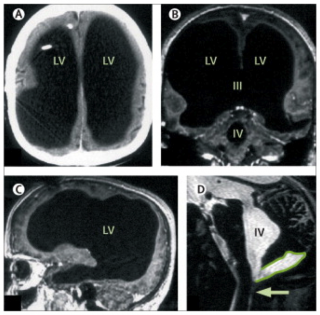
Source: The Lancet
What you are seeing here is a giant empty cavity where most of the patient's brain should be. Fully three quarters of his brain volume is missing, most likely due to a bout of hydrocephalus he experienced when he was six months old.

Last Words
Many unusual phenomena have been observed as life draws to an end. We're going to look at two deathbed anomalies that have neurological implications.
The first is terminal lucidity, sometimes called paradoxical lucidity. First studied in 2009, terminal lucidity refers to the spontaneous return of lucid communication in patients who were no longer thought to be medically capable of normal verbal communication due to irreversible neurological deterioration (e.g., Alzheimers, meningitis, Parkinson's, strokes.) Here are three examples:
A 78-year-old woman, left severely disabled and unable to speak by a stroke, spoke coherently for the first time in two years by asking her daughter and caregiver to take her home. She died later that evening.
A 92-year-old woman with advanced Alzheimer’s disease hadn’t recognized her family for years, but the day before her death, she had a pleasantly bright conversation with them, recalling everyone’s name. She was even aware of her own age and where she’d been living all this time.
A young man suffering from AIDS-related dementia and blinded by the disease who regained both his lucidity and apparently his eyesight as well to say farewell to his boyfriend and caregiver the day before his death.
Terminal lucidity has been reported for centuries. A historical review found 83 case reports spanning the past 250 years. It was much more commonly reported in the 19th Century (as a sign that death was near, not as a phenomenon in its own right) before the materialist bias in the medical profession caused a chilling effect during the 20th Century. Only during the past 15 years has any systematic effort been made to study this medical anomaly. As a data point on its possible prevalence a survey of 45 Canadian palliative caregivers found that 33% of them had witnessed at least one case of terminal lucidity within the past year. Other surveys found have that the rate of prevalence is higher if measured over a longer time window than one year, suggesting that, while uncommon, terminal lucidity isn't particularly rare.
Terminal lucidity is difficult to study, in part because of ethical challenges in obtaining consent from neurocompromised individuals, and in part because its recent identification as a research topic presents delineation problems. However, the promise of identifying new neurological pathways in the brains of Alzheimer's and Parkinson's patients has gotten a lot of attention. In 2018 the US National Institute on Aging (NIA) announced two funding opportunites to advance this nascent science.
Due to the newness of this topic there will continue be challenges with the data for some time to come. However, its impact on eyewitnesses is indisputably profound.
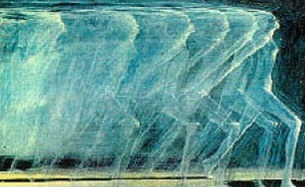
Near Death Experiences
The second deathbed anomaly we will take a look at are Near-Death Experiences (NDEs.) These are extraordinary and deeply personal psychological experiences that typically (but not always) occur during life-threatening emergencies such as cardiac arrest, falls, automobile accidents, or other traumatic events; they are also occasionally reported during general anesthesia. Much of the research in this area has focused on cardiac arrest cases because these patients are unconscious and have little to no EEG brain wave activity, making it difficult to account for how the brain could sustain the electrical activity needed to perceive and remember the NDE. This makes NDEs an important edge case for consciousness science.
NDEs are surprisingly common. A 2011 study published by the New York Academy of Sciences estimated that over 9 million people in the United States have experienced an NDE. Multiple studies have found that around 17% of cardiac arrest survivors report an NDE.
There is a remarkable consistency across NDE cases, with experiencers typically reporting one or more of the following:
The sensation of floating above their bodies watching resuscitation efforts, sometimes able to recall details of medical procedures and ER/hallway conversations they should not have been aware of;
Heightened sensations, occasionally including the ability of blind and deaf people to see and hear;
Extremely rapid mental processing;
The perception of passing through something like a tunnel;
A hyper-vivid life review, described by many experiencers as "more real than real";
Transcendent visions of an afterlife;
Encounters with deceased loved ones, sometimes including people the experiencer didn’t know were dead; and
Encounters with spiritual entities, sometimes in contradiction to their personal belief systems.
Of particular interest is a type of NDE called a veridical NDE. These are NDEs in which the experiencer describes events that occurred during the period when they had minimal or no brain activity and should not have been perceived or remembered if the brain were the source of phenomenal consciousness. These represent about 48% of all NDE accounts (Greyson 2010). Here are a few first-hand NDE reports.
A 62-year-old aircraft mechanic during a cardiac arrest (from Sabom 1982, pp. 35, 37)
A 23-year-old crash-rescue firefighter in the USAF caught by a powerful explosion from a crashed B-52 (from Greyson 2021, pg. 27-29)
An 18-year-old boy describes what it was like to nearly drown (from the IANDS website)
There are thousands more first person NDE accounts published by the International Association for Near-Death Studies and at the NDE Research Foundation. The reason so many NDE accounts exist is because the experience is so profound that survivors often feel compelled to write as a coping method. Multiple studies have found that NDEs are more often than not life-changing events.
A full discussion of NDEs is beyond the scope of this post. For a good general introduction, I highly recommend After: What Near-Death Experiences Reveal about Life and Beyond by Bruce Greyson, MD (2021).

The Materialist Response
Materialists have offered up a number of psychological and physiological models for NDEs, but none of them fits all the data. These include:
People's overactive imaginations. Sabom (1982) was a skeptical cardiologist who set out to prove this hypothesis by asking cardiac arrest survivors who did not experience NDEs to imagine how the resuscitation process worked, then comparing those accounts with the veridical NDE accounts. He found that the veridical NDE accounts were highly accurate (0% errors), whereas 87% of the imagined resuscitation procedures contained at least one major error. Sabom became convinced that NDEs are real. His findings were replicated by Holden and Joesten (1990) and Sartori (2008) who reviewed veridical NDE accounts in hospital settings (n = 93) and found them to be 92% completely accurate, 6% partially accurate, and 1% completely inaccurate.
NDEs are just hallucinations or seizures. The problem here is that hallucinations and seizures are phenomena with well-defined clinical features that do not match those of NDEs. Hallucinations are not accurate descriptions of verifiable events, but veridical NDEs are.
NDEs are the result of electrical activity in the dying brain. The EEGs of experiencers in cardiac arrest show that no well-defined electrical activity was occurring that could have supported the formation or retention of memories during the NDE. These people were unconscious and should not have remembered anything.
NDEs are the product of dream-like or REM activity. Problem: many NDEs occur under general anesthesia, which suppresses dreams and REM activity. So this explanation cannot be correct.
NDEs result from decreased oxygen levels in the brain. Two problems here: 1) The medical effects of oxygen deprivation are well known, and they do not match the clinical presentation of NDEs. 2) The oxygen levels of people in NDEs (e.g., during general anesthesia) has been shown to be the same or greater than people who didn’t experience NDEs.
NDEs are the side effects of medications or chemicals produced in the brain (e.g. ketamine or DMT). The problem here is that people who are given medications in hospital settings tend to report fewer NDEs, not more; and drugs like ketamine have known effects that are not observed in NDEs. The leading advocate for the ketamine model conceded after years of research that ketamine does not produce NDEs (Corraza and Schifano, 2010).

Summing Up
In coming to the end of this series, let's sum up what we discussed.
Consciousness might be wired into the physical universe at fundamental level, as an integral part of quantum mechanics. Certainly several leading figures in physics thought so - Schrodinger, Heisenberg, Von Neumann, and more recently Nobel Laureate Roger Penrose and Henry Stapp.
Materialist propaganda notwithstanding, neuroscience is no closer to identifying Neural Correlates of Consciousness (NCCs) than it was when it started. The source of consciousness remains one of the greatest mysteries in science.
Meanwhile, medical evidence continues to pile up that there is something deeply amiss with the materialist belief that consciousness is produced by the brain. In a sense, the challenge that NDEs and Terminal Lucidity pose to consciousness science is analogous to the challenge that Dark Matter poses to physics, in that they suggest that the mind-brain identity model of classic materialist psychology may need to be rethought to adequately explain these phenomena.
Ever since the Greeks, science has sought to explain nature entirely in physical terms, without invoking theism. It has been spectacularly successful - particularly in the physical sciences - but at the cost of excluding consciousness along with the gods (Nagel, 2012). What I have tried to do in this series is to show that a very credible argument can be made that materialism has the arrow of causality backwards: the brain is not the driver of consciousness, it's the steering wheel.
I don't think we are yet ready to say what consciousness is. Much more research is needed. I'm not making the case for panpsychism, for instance - but I do think consciousness researchers need to throw off the assumption drag of materialism before they're going to make any real progress.
It will be up to you, the scientists of tomorrow, to make those discoveries. That's why I'm posting this to Tumblr rather than an academic journal; young people need to hear what's being discovered, and the opportunities that these discoveries represent for up and coming scientists.
Never has Planck's Principle been more apt: science advances one funeral at a time.
Good luck.
For Further Reading
Barušs, Imants & Mossbridge, Julia (2017). Transcendent Mind: Rethinking the Science of Consciousness. American Psychological Association, Washington DC.
Barušs, Imants (2023). Death as an Altered State of Consciousness: A Scientific Approach. American Psychological Association, Washington DC.
Batthyány, Alexander (2023). Threshold: Terminal Lucidity and the Border of Life and Death. St. Martin's Essentials, New York.
Becker, Carl B. (1993). Paranormal Experience and Survival of Death. State University of New York Press, Albany NY.
Greyson, Bruce (2021). After: A Doctor Explores What Near-Death Experiences Reveal about Life and Beyond. St. Martin's Essentials, New York.
Kelly, Edward F.; Kelly, Emily Williams; Crabtree, Adam; Gauld, Alan; Grosso, Michael; & Greyson, Bruce (2007). Irreducible Mind: Toward a Psychology for the 21st Century. Rowman & Littlefield, New York.
Moody, Raymond (1975). Life After Life. Bantam/Mockingbird, Covington GA.
Moreira-Almeida, Alexander; de Abreu Costa, Marianna; & Coelho, Humberto S. (2022). Science of Life After Death. Springer Briefs in Psychology, Cham Switzerland.
Penfield, Wilder (1975). Mystery of the Mind: A Critical Study of Consciousness and the Human Brain. Princeton Legacy Library, Princeton NJ.
Sabom, Michael (1982). Recollections of Death: A Medical Investigation. Harper and Row Publishers, New York.
van Lommel, Pim (2010). Consciousness Beyond Life: The Science of the Near-Death Experience. HarperCollins, New York.
#consciousness#cognitive science#near death experiences#nde#terminal lucidity#terminal illness#cognitive neuroscience#paradoxical lucidity#hemispherectomy#corpus collosotomy#psychadelic#psychonaut#psychonauts#psilocybin#lsd#ketamine#materialism and its discontents#neurology#neuropsychology#philosophy of mind#brain#quantum physics#consciousness series
51 notes
·
View notes
Text
Hello,
Welcome to the blog or whatever.
I’m Black, and quantum philosophy is my fervor, so I’m here to talk about it.
I’ll touch on topics such as consciousness, the nature of reality, and the human condition.
If you feel no one can explain this topic and it truly be interesting….. I can. Taste and see.
Stay tapped in and follow my work.
1 note
·
View note
Text

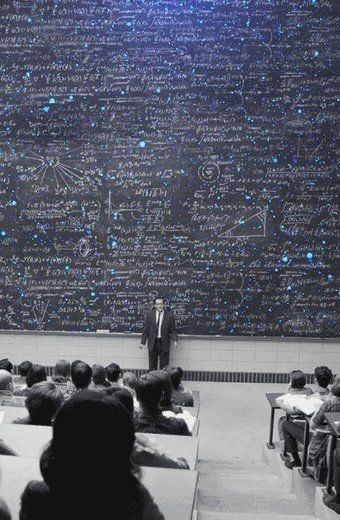

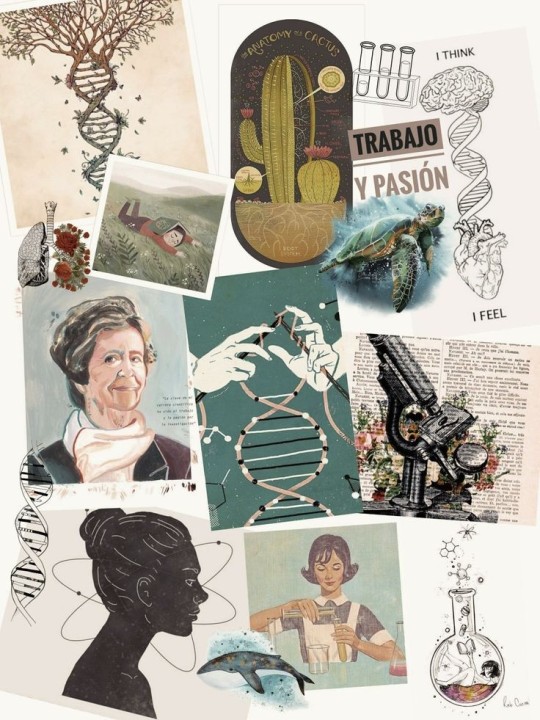


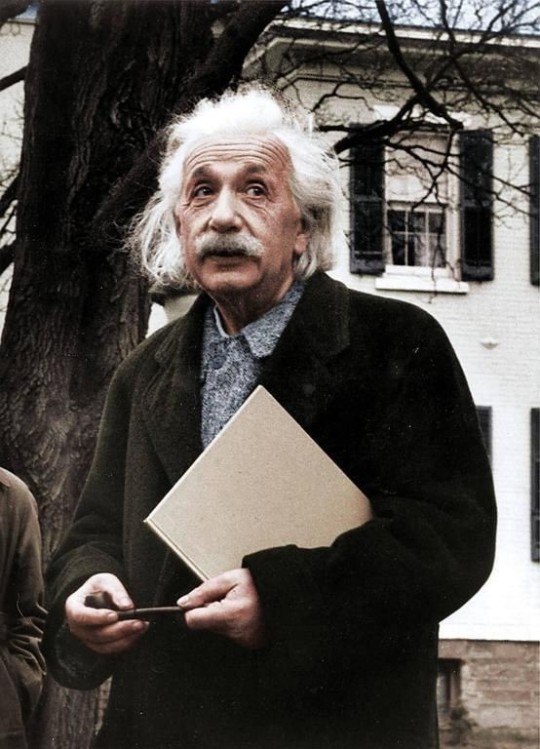



#2014 aesthetic#dark edgy#philosophy#poem#2014 tumblr#grunge tumblr#punk#cats#tumblr grunge#2014 revival#einstein honkai#nina einstein#science#social science#physics#quantum physics#greek philosophy#german philosophy#philanthropy
75 notes
·
View notes
Text
"Zer philosopher Heidehollen tells us zat the universe is just a cold soup of time, all time mixed up together, and vot we call zer passage of time is merely qvantum fluctuations in zer fabric of space-time."
"You have very long evenings in Uberwald, don't you?"
Terry Pratchett, The Truth
#otto von chriek#sacharissa cripslock#the truth#discworld#terry pratchett#uberwald#philosophy#theoretical physics#dark light#photography#quantum#the universe#space time#the universe is a cold soup#very long evenings
146 notes
·
View notes